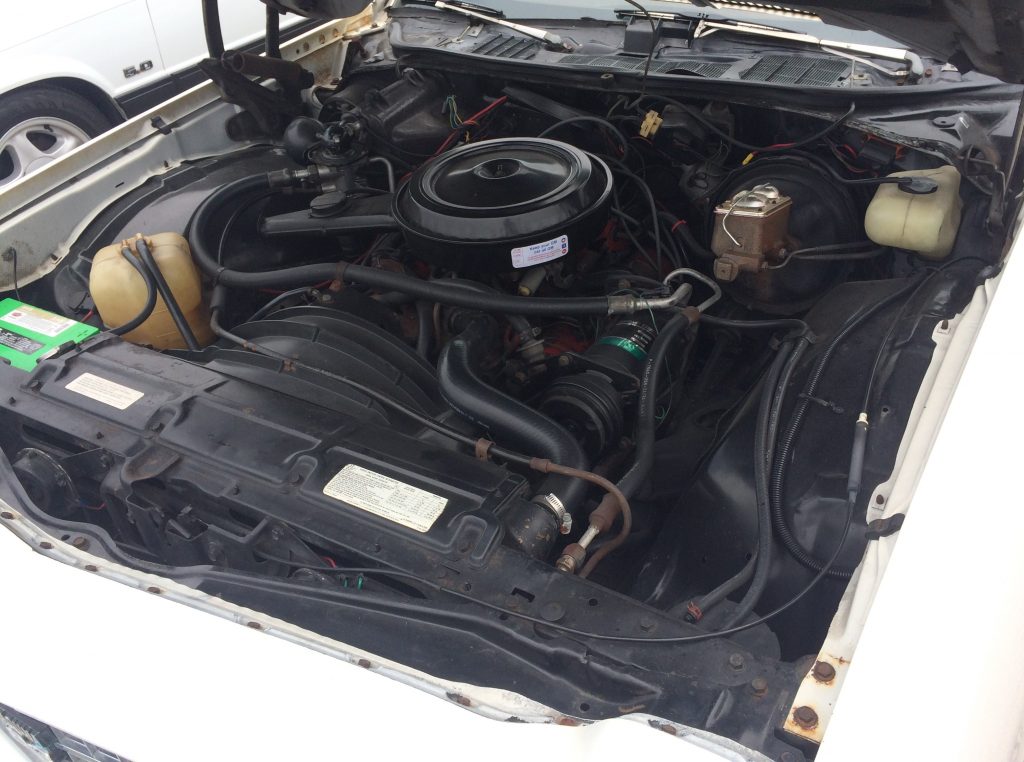Q: I have a 350 Chevy engine that’s basically stock but is bored .030-inch over, has flat top pistons, and an Edelbrock Performer intake and 600 cfm carburetor.
I just put in a COMP Cams Magnum 292 Series cam with new lifters, valve springs, retainers, etc., plus roller rocker arms. My oil pressure has dropped from 60 psi to 30 or 35 psi. Where did I lose pressure, and how do I get it back? I did not nick the cam bearings when I installed the new cam.

A: If you are certain that you did not nick a cam bearing, then the only other thing we can think of is that there is a clearance problem between the bearings and the cam. It won’t be easy to do, but you will need to measure the outside diameter of each cam journal and the inside diameter of each cam bearing and make sure there is enough clearance. We would also check the lifters to make sure they are not binding up in the bores.
…

I put Slick 50 in my engine years ago and lost the oil pressure like that. I still don’t know what made that happen.
Could you have left the fuel pump push rod out?
Did you do the swap with the engine in the vehicle? If so did you drop the oil pan down to get the timing cover off? If so you could have moved or disconnected the oil pump pickup while maneuvering the pan.
I installed a set of 1.6 ratio roller rockers one time and lost oil pressure like this, put the stock rockers back on and oil pressure was fine. 30-35 psi of oil pressure at idle in a small block chevy is ideal though
I think everybody is fixed on high oil pressure ! 30 to 35 lbs op hot in a SBC I think is high ! That engine should have aprox 10 lb pressure for every 1000 rpm ! But you know every body thinks differently ! I am an old school auto mechanic with 40 yrs working on & building all types of SBC engines !
If the block was bored, it should have been cleaned prior to boring. It should have had the oil galley plugs removed for a proper cleaning. If they were not removed it is possible that some slugs is blocking an oil galley. Or it is also possible that one of the galley plugs was either improperly installed or came out of the galley feeding the lifters. There is also a plug on the oil filter side of the block in a passage that is under the rear main bearing cap. Maybe it was not reinstalled. Also some machine shops drill a small hole in plug at the front of the main oil galley to give the timing chain additional oil. Depending on the hole size, bearing clearances, connecting rod side clearance and oil pump used, any or all of which may affect idle oil pressure. At idle with 30 pounds of pressure check the volume of oil coming to the rocker arms on both banks. They should be at least constantly dripping oil. If your pressure at 3000 RPM is at least 45 to 50 psi the oil volume should be making a hell of a mess. If not, start looking for the problem.ex
Correct
Many fine suggestions offered here! Congratulations.
The difference is probably the change in bearing clearance at the old and new cam journals which you could have measured when making the install but would not change anyway. As others have said 30-35 idle pressure is not to be complained about. Lifter clearances can also contribute to OP losses. 16 lifters with a few thousandth undersized is a big oil leak.
I would first start out with a large cooler of beer close and handy. Then Mick your old lifters than all the new ones. An undersize lifter will drop oil pressure than pull cam and do the same comparison on all journals. If all checks out well put old cam back it. Before completion check out some of the other suggestions. It’s now time to freshen up the cooler. Good luck.
If the oil pump pickup was moved that wouldn’t cause the oil pressure to drop it at the oil pan or the oil pump pickup came off that would be no oil pressure